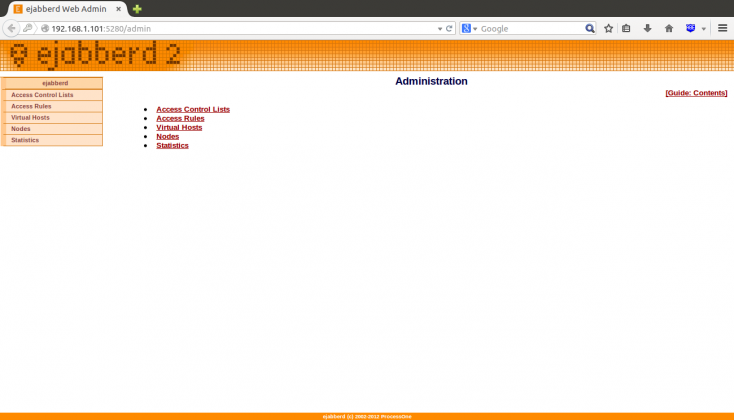
Users with accounts on one server–if the server administrators allow it–can communicate with users on other servers. resources), the resource adds a useful amount of specificity. the resource is optional although XMPP allows a single JID to be connected to the server from multiple machines (i.e. In following example, “username” is the username, “” is the hostname, and “/office” is the resource. The resource is optional, and is often safely omitted or ignored for most users. It often looks like an email and contains the username that identifies a specific user on a server, the hostname that identifies the server, and a resource that identifies where a given user is logged in from. The JID or “Jabber ID,” is the unique identifier for a user in the XMPP network. Though you can successfully run an XMPP server with only a passing familiarity of the way the XMPP network and system works, understanding the following basic concepts will be helpful: Once you’ve completed these requirements we can begin with the installation process. This installation process assumes that you have a working installation of Ubuntu 8.04 (Hardy) and have followed the steps in the Setting Up and Securing a Compute Instance guide, and now have an up to date instance of the Ubuntu Hardy operating system and are connected to your Linode via SSH and have root access. However, it is incredibly robust and can scale to support incredibly heavy loads: ejabberd servers are believed to be the backbone for some of the largest Jabber servers running now. Ejabberd can be considered “heavyweight” by critics, but mostly due to the requirements of the Erlang run-times. With a web-based interface, and broad support for XMPP standards, ejabberd is a great choice for a multi-purpose XMPP server. It is extensible, flexible and very high performance.


Ejabberd is a Jabber daemon written in the Erlang programming language.


 0 kommentar(er)
0 kommentar(er)
